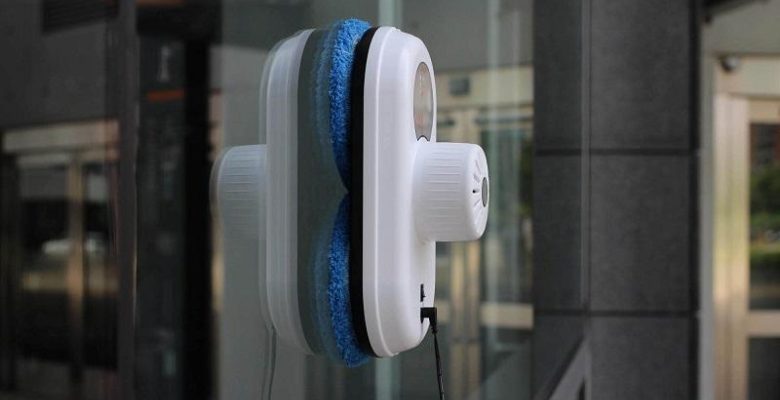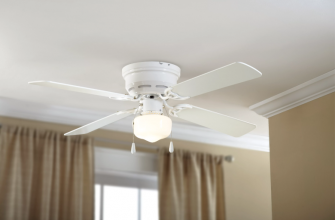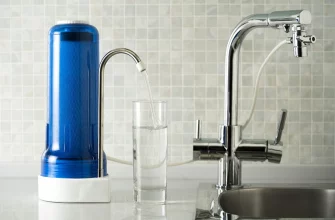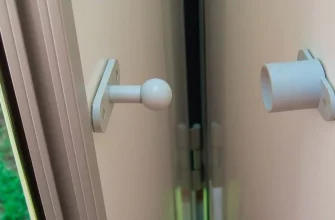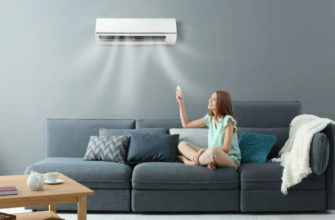Cleaning windows can be a tedious and time-consuming chore. The thought of hanging precariously out an upper story window with a squeegee in hand is enough to make anyone look for an easier solution. This is where automatic window cleaning robots come in handy!
In this comprehensive guide, we will cover everything you need to know about choosing the best automatic window cleaning robot for your home or office. We’ll discuss the different types of robots, key features to compare, safety considerations, tips for setup and operation, maintenance best practices, and reviews of some of the top models on the market.
By the end of this article, you’ll be able to confidently select a window washing robot that fits your needs and budget. So let’s get started!
- What are Automated Window Cleaning Robots?
- Benefits of Using Automatic Window Cleaning Robots
- Factors to Consider When Choosing an Automatic Window Cleaning Robot
- Types of Automatic Window Cleaning Robots
- Robotic Suction Devices
- Magnetic Automatic Window Cleaning Robots
- Automated Robotic Arms
- Compatibility with Different Window Types
- Safety Features to Look For
- Programmable Cleaning Modes
- App and Remote Control Functionality
- Battery Life and Recharging
- Setting Up and Operating Your Automatic Window Cleaning Robot
- Preparing Your Windows for Cleaning
- Step-by-Step Instructions for Setting Up the Robot
- Operating the Robot Safely and Effectively
- Maintenance and Troubleshooting
- Regular Cleaning and Maintenance Tasks
- Troubleshooting Common Issues
- Replacing Parts and Accessories
- Advanced Features and Customization Options
- Integration with Smart Home Systems
- Customizable Cleaning Schedules
- Additional Attachments and Accessories
- Comparing Top Automatic Window Cleaning Robots on the Market
- In-Depth Reviews of Leading Models
- Comparison of Key Features and Performance
- User Feedback and Ratings
- Final Considerations for Choosing the Best Automatic Window Cleaning Robot
What are Automated Window Cleaning Robots?
Automated window cleaning robots, also known as window washing robots or window cleaners, are small robotic devices designed specifically to clean glass windows and surfaces automatically.
They are equipped with features like motorized wheels or tracks to move across windows, rotating brush heads to scrub dirt and grime, spray nozzles or microfiber pads to apply and wipe cleaning solution, and sensors to detect boundaries and obstacles.
Many window cleaning robots can be programmed through an app or remote control to navigate set cleaning routes. The robots use special safety anchors and vacuum suction pads to adhere to the window surface securely, allowing them to clean vertically, horizontally, and spot clean specific areas.
Advanced window washing robots incorporate AI and machine learning to map out customized cleaning patterns tailored to the exact dimensions of your windows. They can tackle everything from small bathroom mirrors to large commercial storefronts.
In a nutshell, automatic window cleaners are robotic helpers designed to save you time and effort by cleaning those hard-to-reach window panes safely and efficiently with little supervision.
Benefits of Using Automatic Window Cleaning Robots
Using an automatic window cleaning robot offers many helpful benefits:
- Saves time and effort – Robots do the hard work for you, reducing manual labor.
- Improves safety – No need for ladders, risky leaning out of windows.
- Enables hard-to-reach cleaning – Robots can access tricky spots like skylights.
- Delivers consistent, quality cleans – Robots clean thoroughly each time.
- Easy to operate and maintain – Simple controls and self-care features.
- Cost-effective long term – Pays for itself over repeated professional cleanings.
- Customizable cleaning schedules – Clean exactly when needed.
For homeowners and businesses alike, window cleaning robots eliminate a chore that is unpleasant, dangerous, and time consuming. They represent a hands-off, efficient cleaning solution for sparkling windows.
Factors to Consider When Choosing an Automatic Window Cleaning Robot
Types of Automatic Window Cleaning Robots
Robotic Suction Devices
These types of automatic window cleaners rely on powerful suction pads to temporarily adhere themselves to glass surfaces. They use vacuum pressure to cling to windows vertically or horizontally during cleaning.
Many robotic suction window washers have rotating brush heads to agitate dirt and motorized wheels or tracks to smoothly transition across the entire window area. They can come with spray bottles to dispense cleaning solution.
Suction robots often have tethers for safety and need to be repositioned to cover exceptionally large windows. But they work very well for average sized windows and are easy to operate.
Magnetic Automatic Window Cleaning Robots
Magnetic window cleaning robots utilize built-in magnets or magnetic strips placed around a window frame to enable them to attach securely to the glass. This allows them to smoothly glide across the surface while cleaning.
These robots frequently rely on rotating microfiber pads or cloths to physically wipe and polish the window. Spray nozzles may also be incorporated to dispense cleaning solution onto the glass to dissolve grime and dirt.
Magnetic robots can handle larger surface areas more efficiently than suction units. But they require metal window frames or applied magnetic strips to leverage their magnetic adhesion and may leave some residue behind.
Automated Robotic Arms
Robotic arm window cleaners utilize articulating arm mechanisms to replicate broad human-like movements across window surfaces. They may clamp to a nearby wall or window sill and stretch out to reach cleaning sites.
The jointed robotic arms have multi-directional range of motion. Attachments on the end like spinning mops, squeegees, or microfiber pads perform the actual cleaning task. Some models also incorporate suction grippers for extra adhesion.
Robotic arm units can tackle very large or uniquely shaped window configurations. But they tend to be bulkier and pricier than other designs. They also usually require mounting hardware and professional installation.
Compatibility with Different Window Types
When selecting a window cleaning robot, it’s important to consider what types of windows and glass surfaces you need to clean. Key factors include:
- Window sizes and locations.
- Window frame materials (wood, metal, vinyl).
- Single, double, or triple pane construction.
- Tinted or coated glass.
- Interior vs. exterior cleaning needs.
Consult individual product specifications to confirm which window varieties they can handle. Some can transition between surface types more flexibly than others.
Safety Features to Look For
Any automated device climbing exterior walls warrants careful safety considerations. Look for these reassuring safety features when robot window cleaner shopping:
- Multiple adhesion modes (suction + magnets).
- Tethers and restraints.
- Obstacle detection and avoidance.
- Grip sensors to prevent falls.
- Emergency stop buttons.
- Password protection.
- Alerts if disconnected from power.
Also check that the robot carries safety certifications like CE, RoHS, ETL, or FCC. Carefully review all safety documentation before installation.
Programmable Cleaning Modes
Convenient app and remote control interfaces allow you to program automated cleaning schedules, routes, and preferences. Look for window cleaning robots that offer
customizable features like:
- Scheduled cleaning times.
- Customizable cleaning routes and patterns.
- Spot cleaning specific window areas.
- Adjustable speed settings.
- Window surface type selection.
- Choice of cleaning cloth materials.
The ability to pre-program cleaning details makes these devices even more autonomous, saving you time and hassle.
App and Remote Control Functionality
Many of the best window washing robots on the market come with intuitive mobile apps and remote control options. This allows you to orchestrate cleaning sessions conveniently from your smartphone or with a dedicated remote device.
Look for app features like:
- Programming cleaning schedules.
- Monitoring cleaning progress.
- Window surface mapping.
- Battery level indicators.
- Notifications for obstacles or errors.
- Starting, stopping, pausing cleaning.
Smooth app integration greatly enhances the user experience and allows you to oversee automated cleaning progress even when away from home.
Battery Life and Recharging
Since window cleaning robots operate unattended for long stretches, sufficient battery life and smart recharging capabilities are essential. Compare aspects like:
- Battery type (Lithium-Ion vs. NiMH).
- Battery voltage.
- Run time per charge.
- Recharge time.
- Replaceable vs. built-in batteries.
- Automatic recharging between cleaning cycles.
- Low battery alerts.
Units that can recharge themselves automatically between sessions offer the most convenience and longevity.
Setting Up and Operating Your Automatic Window Cleaning Robot
Preparing Your Windows for Cleaning
Before setting your window cleaning robot loose, invest some prep time to ensure an optimal cleaning experience:
- Clean window frames and tracks to enable smooth traversal.
- Remove protruding objects like window AC units.
- Secure loose elements like screens or blinds.
- Check for cracks, leaks, or damage.
- Mark exceptionally fragile items.
- Wipe down excess grime beforehand if needed.
It also helps to run an initial test cycle on a small window pane before attempting a whole building facade. This confirms proper operation prior to relying solely on the autonomous device.
Step-by-Step Instructions for Setting Up the Robot
Always carefully follow your device’s specific setup guidelines. But general steps include:
- Fully charge the robot’s batteries.
- Download and connect app if available.
- Affix safety tether if required.
- Secure robot to window and activate adhesion.
- Define cleaning route via app or unit controls.
- Fill water reservoir and attach cleaning pads.
- Press start and allow robot to self-navigate.
Monitor initial runs to ensure proper robot traction, movement, cleaning motion, and route accuracy. Make small adjustments as needed.
Operating the Robot Safely and Effectively
Day-to-day operation best practices include:
- Periodically check robot status via app.
- Have someone on-site to monitor outdoor runs.
- Keep safety tether secured during exterior cleaning.
- Replenish water and cleaning solution as required.
- Replace cleaning pads when visibly soiled.
Maintenance and Troubleshooting
Regular Cleaning and Maintenance Tasks
Like any gadget, window cleaning robots perform best with basic care. Plan to:
- Check wheels and tracks for debris after each run.
- Wipe down the chassis with a soft damp cloth.
- Clean sensors and camera lenses as needed.
- Check battery health and recharge fully every few months during inactive periods.
- Test safety anchors and adhesions pads every season.
Also replace common parts that degrade over time like squeegee blades, microfiber pads, and water filters based on usage levels.
Troubleshooting Common Issues
Despite good maintenance, occasional operational problems can occur. Here are some quick troubleshooting tips for common glitches:
- Weak cleaning – Try new cleaning pads and solution.
- Spotty coverage – Adjust route programming.
- Not adhering – Check suction pads and magnets.
- Not filling water – Inspect hoses for kinks.
- App connectivity problems – Reboot device and phone.
For advanced issues, most manufacturers provide customer support channels like online knowledge bases, email assistance, live chat services, troubleshooting guides, and repair options to help restore optimal performance.
Replacing Parts and Accessories
To sustain peak cleaning functionality long-term, expect to replace certain robot components that see regular wear and tear like:
- Filters.
- Squeegee blades.
- Cleaning pads and cloths.
- Suction grippers.
- Batteries.
Opt for window cleaning robots that use readily available, affordably priced replacement parts for easier maintenance. Also choose robots backed by warranties to cover defects.
Advanced Features and Customization Options
Integration with Smart Home Systems
Some high-end window cleaning robots offer integration with popular smart home platforms like Amazon Alexa, Google Assistant, Samsung SmartThings, and IFTTT. This allows you to:
- Control the robot through voice commands.
- Link device status to other smart gadgets.
- Automate cleaning triggers based on home events.
If you already own compatible smart home gear, seek out window cleaning robots with native integration to enhance the experience.
Customizable Cleaning Schedules
Most window cleaning robot apps allow you to program recurring cleaning schedules suited to your needs. Customize details like:
- Cleaning times and frequencies.
- Initiating cleaning remotely while away.
- Pausing/resuming cleaning as needed.
- Alternating cleaning routes and patterns.
- Adapting schedules by season.
Setting detailed cleaning schedules ensures windows get scrubbed at just the right cadence year-round.
Additional Attachments and Accessories
Some robot window cleaner brands offer extra attachments and accessories you can add on for expanded functionality:
- Extra-long safety tethers.
- Secondary battery packs.
- Replacement squeegees or microfiber pads.
- Spare charging cables.
- Additional cleaning solution bottles.
- Storage and carrying cases.
Factor in future accessory needs when deciding between robot models. And seek out brands with ecosystems that support customizing and expanding capabilities over time.
Comparing Top Automatic Window Cleaning Robots on the Market
In-Depth Reviews of Leading Models
When researching your buying options, look to expert window cleaning robot reviews for helpful insights. Trusted independent testers evaluate critical performance metrics like:
- Cleaning effectiveness.
- Ease of setup.
- Safety technology.
- Durability and longevity.
- Navigation accuracy.
- App functionality and features.
- Battery life and charging.
- Noise levels.
- Accessory ecosystem.
- Warranties and customer support.
Professional reviews provide objective data to compare top models side-by-side across these key criteria.
Comparison of Key Features and Performance
When deciding among top-rated window cleaning robot brands and models, create your own comparison chart summarizing factors that matter most to you. This may include:
- Compatible window types and sizes.
- Cleaning technology (squeegees, microfiber pads, etc.).
- Navigation methods (wheels vs. magnetic vs. robotic arms).
- Adhesion systems (vacuum suction, magnets, etc.).
- App remote control abilities.
- Cleaning customization options.
- Smart home integration.
- Safety certifications.
- Battery specifications.
- Dimensions and weight.
- Special features like UV sterilization.
Creating your own comparison chart lets you evaluate window cleaning robots with performance criteria tailored to your unique environment and priorities.
User Feedback and Ratings
Before committing to a specific window washing robot model, scour online customer reviews to uncover real-world pros and cons. Key insights from other buyers may reveal:
- Ease of initial setup.
- Noise levels in actual use.
- Required maintenance frequency.
- Durability over time.
- Battery life observations.
- App and remote reliability.
- Safety in practice.
- Actual cleaning performance.
Credible user reviews deliver transparent impressions you can trust to complement expert testing.
Final Considerations for Choosing the Best Automatic Window Cleaning Robot
As you evaluate options to find the perfect window cleaning robot for your home or office, tailor your selection criteria to your specific environment and priorities.
Key aspects to consider include window sizes and locations, cleaning frequency required, safety certifications, programmable features, operating costs, and warranty coverage.
Also determine whether smart home connectivity, customizable accessories, or advanced capabilities like UV disinfection are worthwhile for your purposes.
Taking time upfront to thoroughly assess your needs will pay off tremendously in keeping your windows spotless with an automated helper built for your unique specifications.
With this comprehensive window cleaning robot buying guide as your reference, you now have the insights needed to confidently invest in these transformative time-saving devices.

